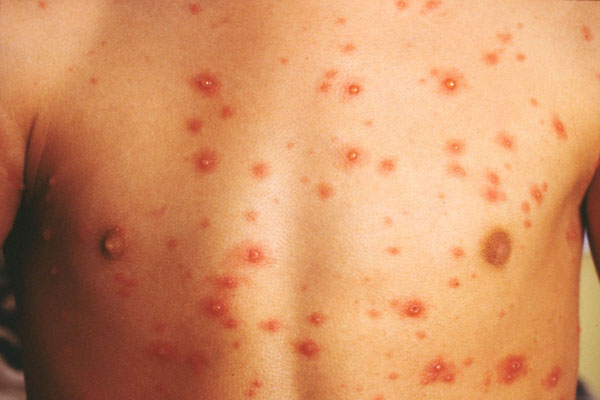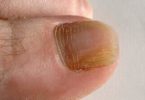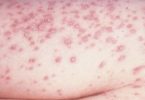What's in this article?
What is Varicella-Zoster Virus
Varicella zoster virus (VZV) remains dormant in the nervous system after a bout of chickenpox.
Shingles is caused by the same virus that causes chickenpox. Once you have had chickenpox, the varicella-zoster virus lies dormant in your nerves and can re-emerge as shingles. Shingles, which is characterized by a rash of blisters, can be very painful. But it is not life threatening. Some people who develop shingles also develop a condition caused postherpetic neuralgia, which causes the skin to remain painful even after the rash is gone. Shingles is most common in people over age 60, or in those with weakened immune systems. There is a vaccine that reduces your risk of getting shingles.
Symptoms of Varicella-Zoster Virus
Chickenpox
The typical rash of chickenpox is made up of groups of small, itchy blisters surrounded by inflamed skin. The rash usually starts on the face, scalp, or chest, and quickly spreads throughout the body. It usually appears a few days after you have been exposed. Over 4 days, each blister tends to dry out and form a scab, which then falls off 9 to 13 days later.
The rash may be preceded or accompanied by:
- Fever, usually low grade
- Fatigue
- Headache
- Flu-like symptoms
Shingles
The typical shingles rash starts as redness followed by blisters that usually cover only one side of your body. The rash follows the path of the nerve where the virus has lain dormant. About 50 to 60% of people with shingles have the rash on their trunk. The next most common site is one side of the face, which may even include the tongue, eye, or ear.
Before the rash appears, you will have warning symptoms of pain, usually a sharp, aching, piercing, tearing, or burning sensation, on the part of your body where the rash appears 1 to 5 days later. That area may also feel itchy, numb, and unbearably sensitive to touch, even just from your clothes touching your skin.
Other symptoms may include:
- Fever
- Malaise (feeling unwell) and other flu-like symptoms, including muscle aches
- Headache
- Swollen lymph nodes
- Upset stomach
Causes of Varicella-Zoster Virus
Chickenpox
Both chickenpox and shingles are caused by the varicella-zoster virus (VZV), a type of herpes virus. The virus is spread when you come into contact with the rash, or by sneezing, coughing, and breathing. In other words, when someone with chickenpox sneezes or coughs, there are droplets with the VZV virus in the air. The person is contagious from 2 days before the rash appears until all of the blisters have crusted over.
Shingles
While shingles is caused by the same virus that leads to chickenpox, the way you develop this painful skin condition is different. After you have had chickenpox, the virus lives in a dormant state, as if it is hibernating, in nerve cells along your spine. Later in life, when it “wakes up”, usually from a weakened immune system, aging, or other risk factor, the virus travels down the path of the particular nerve where it was “hibernating,” causing pain followed by the rash. About 30% of people who have had chickenpox will develop shingles. Getting vaccinated can reduce your risk.
Varicella-Zoster Virus Prevention
Chickenpox
- The chickenpox vaccine (Varivax) is given to children over 1 year old. If a person receives the vaccine before age 13, then he or she only needs one dose. If a person receives the vaccine when he or she is older than 13, a second dose is needed 1 to 2 months later.
- If you have never had chickenpox or the vaccine, avoid contact with anyone who has chickenpox.
- Children with chickenpox should be kept out of school or daycare until their doctor says otherwise to avoid spreading the virus.
Shingles
- If you have never had chickenpox, the chickenpox vaccine can reduce your risk of getting chickenpox and shingles. Even if you do get the disease, having had the vaccine reduces the risk of complications.
- The shingles vaccine (Zostavax) can reduce the risk of getting shingles among people who are over 60 and have had chickenpox. It does not completely ensure you will not get shingles. If you do develop shingles, being vaccinated reduces the severity and the risk of postherpetic neuralgia.
The shingles vaccine is not recommended for people who:
- Have ever had a reaction to gelatin or neomycin
- Have a weakened immune system
- Take drugs to suppress the immune system (such as corticosteroids)
- Have tuberculosis
- Have a history of lymphatic or bone marrow cancer
One study found that older adults who regularly practice tai chi had a better immune response to the varicella virus, and their immunity increased even more when they had the shingles vaccine.






Leave a Comment